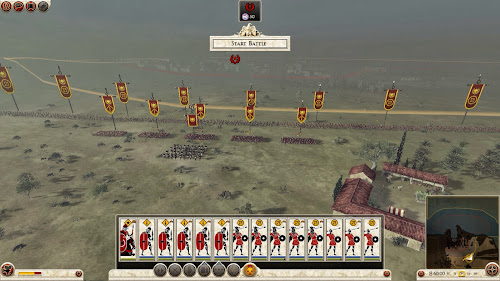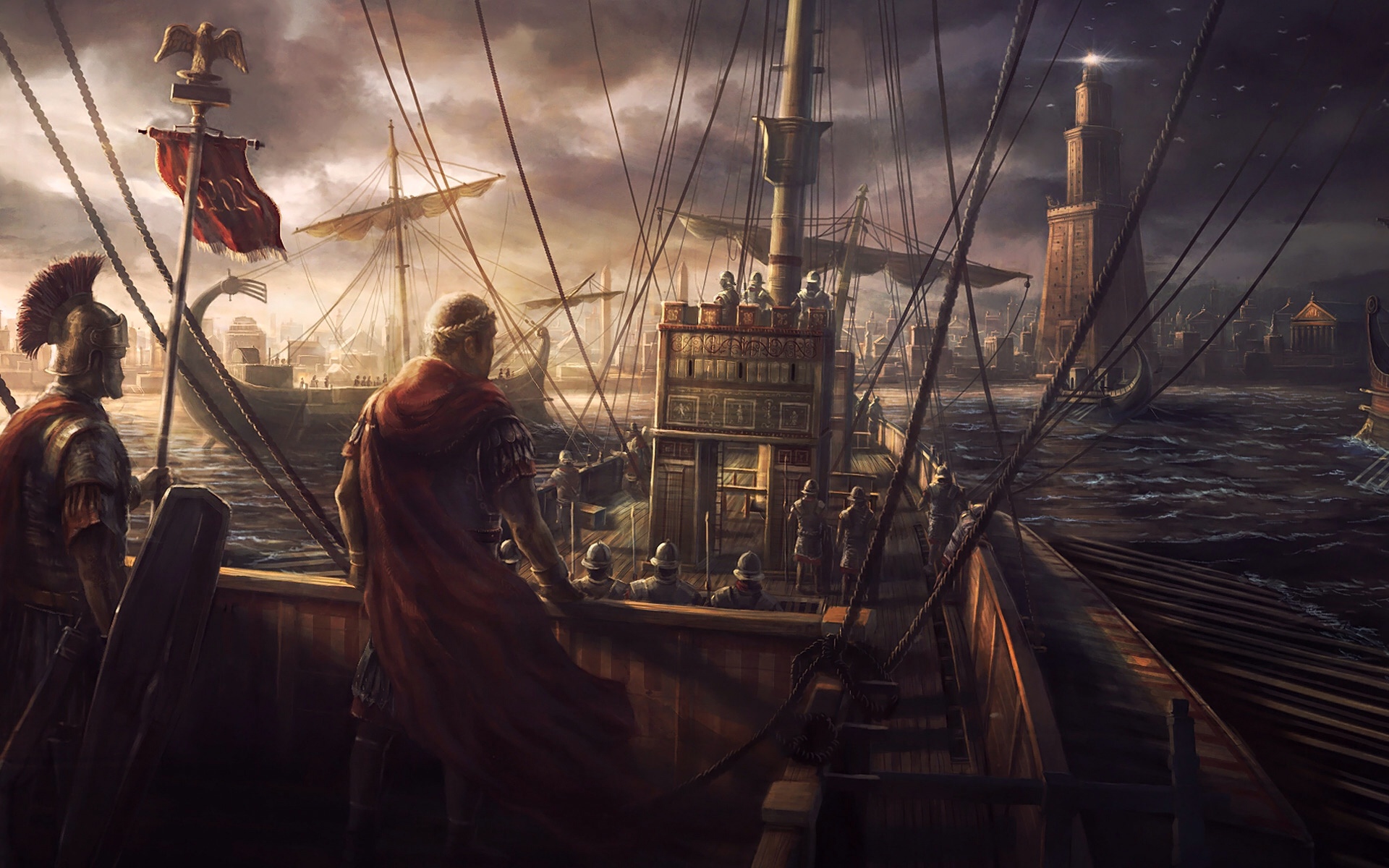Is This Game For You?
This game is not for everyone. In fact, the more I play it, the more it seems made exclusively for longtime fans. If you’ve never played a Total War game, do not start with this one. Do yourself a favor, get Shogun 2 or Medieval II first, and then decide if it’s for you. Not that Total War: Rome 2 is a bad game. In a lot of ways, it’s great. But it is not a game for Total War Noobs.
Total Bore?
I have the luxury of writing this review after gamers have flooded Metacritic and given the game an average score of 3.8. When I first played the game, I was inclined to agree. The new systems put in place seemed regressive, the region/settlement reorganization confusing, and the time between turns far too long, even for a Total War game. Rome 1 represented a huge shift in the way these games were designed, and its newest offspring seems just as determined to innovate and make its mark.
The main change that will either delight or offend you is the triple-objective victory conditions. You have the option of achieving a cultural, economic, or military victory. This is the first new feature that makes me shake my head, since the three different conditions are incredibly similar, and all involve conquering a large number of settlements. While you might think that more freedom in a game is inherently good, Rome 2 feels unstructured and random. While Rome 1 and most of the Total War games have clear objectives and a time limit, Rome 2 allows for players never requires its players to choose any particular path.
Some longtime Total War fans will be delighted at this newfound anarchistic freedom, but I was not. Part of the fun in these games has been accomplishing the perceived goals of the ancient factions; of succeeding where they failed. The in-game missions in Rome 1 often gave direction at just the right time, while Rome 2’s missions seem much more random. Instead of “take this settlement within ten turns,” it’s more like “control 2 regions, you know, whenever you can.” While the latter might make for more accurate history, it makes the game feel rudderless.
A Boat With No Rudder in a Storm
The few time-sensitive missions I’ve come across usually involve defeating some army, and here is where I ran into the familiar Total War AI disconnect. In previous games, the diplomacy AI was separate from the AI that governed the armies and naval forces. This made the AI completely unreliable as an ally or an enemy alike. In this case, it seems like the disconnect is between the army you’re supposed to fight and the mission assignment. Usually the army goes somewhere else, leaving my poor soldiers to traipse through enemy territory like a big fat ambush target.

Of course, I eventually found and utterly destroyed those trespassing Etruscans. As you can hopefully see in this screenshot, Rome 2’s campaign map is beautiful and, like Shogun 2, rotates.
The political options are also a point of contention. The new system offers more opportunities for intrigue and is no doubt meant to reflect the political in-fighting that engulfed so many ancient factions. But in reality it muddies up the game more by adding yet another thing to track. And it doesn’t help that other important information (like settlement happiness) is now obscured within a confusing new interface and regional organization.
The Battles – Bigger and Better
One area where I will say that Total War: Rome 2 absolutely shines is in its battles. They succeed at being both beautiful and clear. The stylized unit cards are much better than the pixellated mess of Rome 1 and the often confusing cards from Shogun 2. In addition to giving the game a unified look, they’re also very clear and easy to understand at a glance. Spearmen look different than slingers who look different than archers and cavalry.
Also, adding boats to battles is objectivly awesome and adds a new layer of meaty complexity to the battles. The ships don’t provide siege bombardment like they did in the Shogun 2 expansion “Fall of the Samurai.” Instead, in true ancient world fashion, they simply land and unload troops in the middle of the battle. Battles where both the player and the enemy bring naval reinforcements can get especially hairy. In fact, the use of ships completely changed my strategies on two occasions; one in which I didn’t notice the enemy ships and suddenly my troops were surrounded, and the other in which I returned the favor to those greedy Macedonians.
Naval battles are chaotic and satisfying. Ramming an enemy ship, as well as protecting your own from ramming can be a tricky and demanding task. But it is deviously fun to outsmart enemy boats and introduce the occupants to Poseidon personally. And while you’re trying to ram the enemy, they might be trying to position a boat full of ranged troops parallel so that they can rain death and javelins onto your deck. Now imagine the complexity of flanking/ramming on the ocean while you’re simultaneously fighting on land, and you have some idea of what taking Athens was like for my Legionnaires. I have never been so stressed out during a battle, and when it was over, the exhilaration of accomplishment coursed through my veins.
The battles succeed at being immersive, beautiful, cinematic, harrowing, and most of all, fun. However, where the battles usually lose their luster in a Total War game is when you’re mopping up small remnants of the army you just crushed, chasing down one-unit armies and wasting time flushing them out of hiding places on the battle map. In Rome 2, however, the auto-resolve system has been upgraded to save the user time when the outcome of a battle is clear before it begins. Players now have the option of auto-resolving in three different “stances” for their army, with statistics clearly displayed for each option. Here in the battles is the Total War we’ve all come to love – a franchise that delivers the best strategy game experience in PC gaming.
The Agents
Another area where Creative Assembly deserves a lot of credit is the new agents available in the game. There’s the classic Spy (or Scout, depending on your culture), who thankfully now also functions as an assassin, but there is also the Hero and the Dignitary. The Hero is an incredibly useful agent who can challenge enemy generals to deathmatches, train armies, and even kill or convert rival agents. Besides its usefulness, history buffs like me can appreciate the nod to the Hero-centric nature of the Ancient Western cultures.

Creative Assembly seems to have done away with the mini-videos that used to accompany Agent actions. As much as I enjoyed those videos, I can’t deny that they detracted from the seriousness of the concept of war.
The Dignitary is useful for culture conversion, but can also be specialized toward assassination, disruption, and increasing taxes and public order. Every agent begins with versatility and gradually becomes specialized. They’ve imported a similar leveling system to what we found in Shogun 2, which gives the player a certain amount of control over their generals’ and agents’ skills and specialties, while also giving them traits based on their in-game behavior (or perceived laziness). The ability to set your general/spy/hero/diplomat on a certain course and refine them with each level makes the Agents both intrinsic to the game and interesting to play. It’s also nice and realistic that the agents gain experience even when they fail a task, even if it’s just a small amount.
Rome 2 Was Not Built in a Day
There’s certainly nothing wrong with pointing out a game’s flaws. However, I think it’s equally important to take into account the scope of a game, and to recognize ambition. Say what you will about Rome 2 and Creative Assembly; they dream big and have an obvious love for their subject matter. What they have set out to create in Rome 2 is more than just another RTS build-and-kill. Everything about the game tells me that they wanted to create a detailed simulation of the Ancient World that would give their players a glimpse into not only the fighting, but the more intimate aspects of ancient life.

The Classic Total War mechanics are all here, including fog and hidden units. It has also become easier to hide units on the battlefield, making for sneaky opportunities for a cunning general.
While, yes, some of their choices bog down gameplay worse than a turtle crawling through a marsh, these choices do have redemptive value. And more importantly, the game does pay off for players who are patient enough to put up with its many faults. After about three hours of playing, I felt like I had a handle on its vast sea of new features and settings, and I had a lot of fun.
Rome 2 seems like an experiment in combining ambitious strategy elements with the freedom of a sandbox game. While the game achieves mixed results, the results are nonetheless interesting. The Total War games tend toward historical accuracy to a fault, and Rome 2 is probably the most historically accurate game they’ve ever made, not just in the painstaking details of culture, but even the minutiae of everyday life as a political leader.
Pros:
- Incredibly immersive challenging battles with a clear, simple interface
- Tons of new features
- Attention to historical detail
- Better autoresolve
- Eventually fun and exciting
Cons:
- Lacks focus
- Massive learning curve
- Tutorial is sluggish and sprawling
- Larger time investment than most games
- DLC is costly – $7.99 for a culture pack (it includes 3 factions, but still)
Overall Score: 7.5/10
Buy if you: are a Total War fanatic, are willing to invest a few hours to adjust to a massive amount of new (and somewhat confusing) features, and have a friend to play the Multiplayer Campaign with.
Wait for a price drop if you: are an experienced Strategy gamer who’s never played TW games, hate expensive DLC (trust me, it will go on sale someday), or if you don’t have the patience or time to spend several hours learning all the new tricks.
Pass if you: don’t enjoy Strategy games (why are you still reading this?), hate DLC in all its forms, or expect a fast-paced action game rather than a slow burning, history-inspired turn-based RTS.






